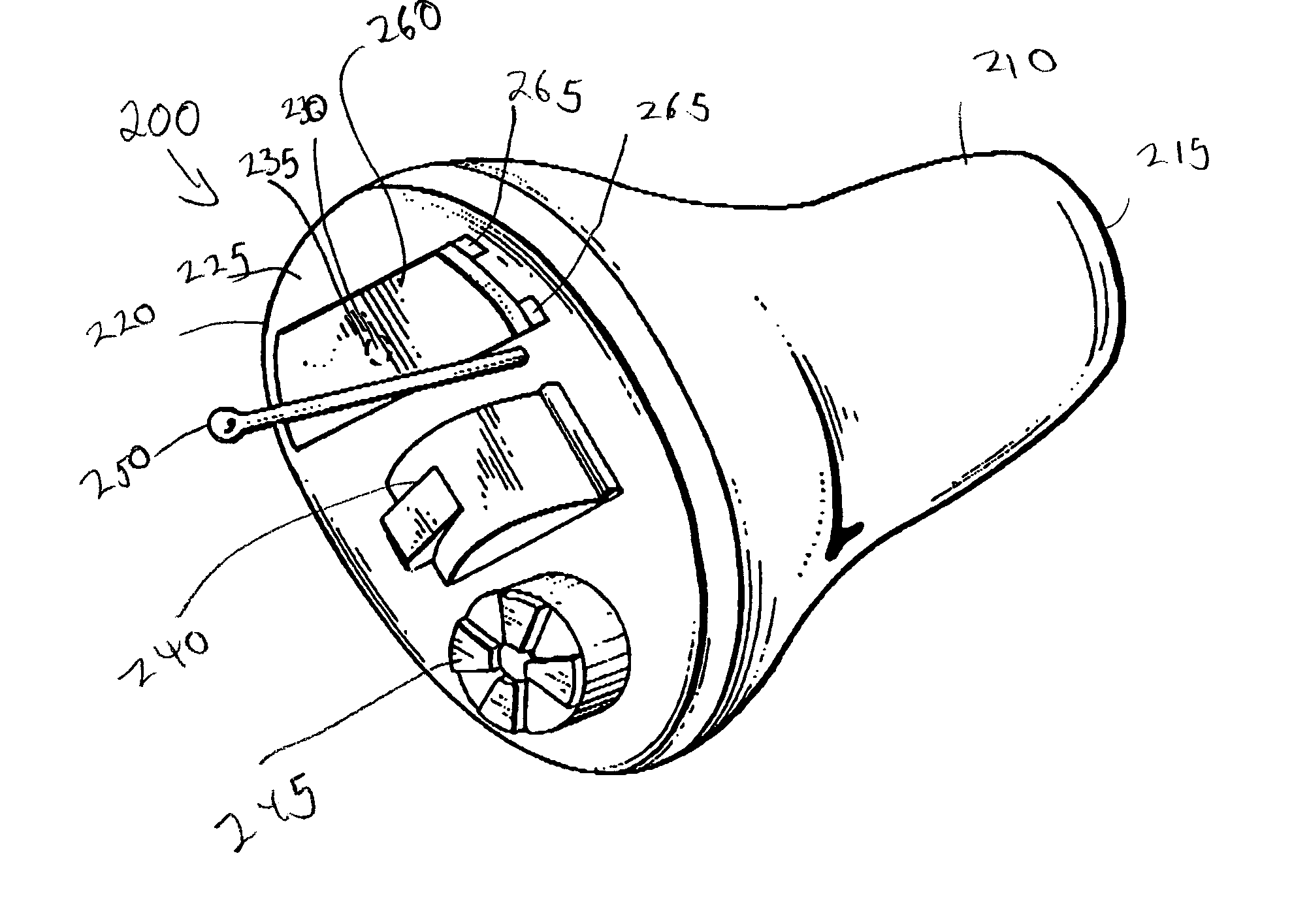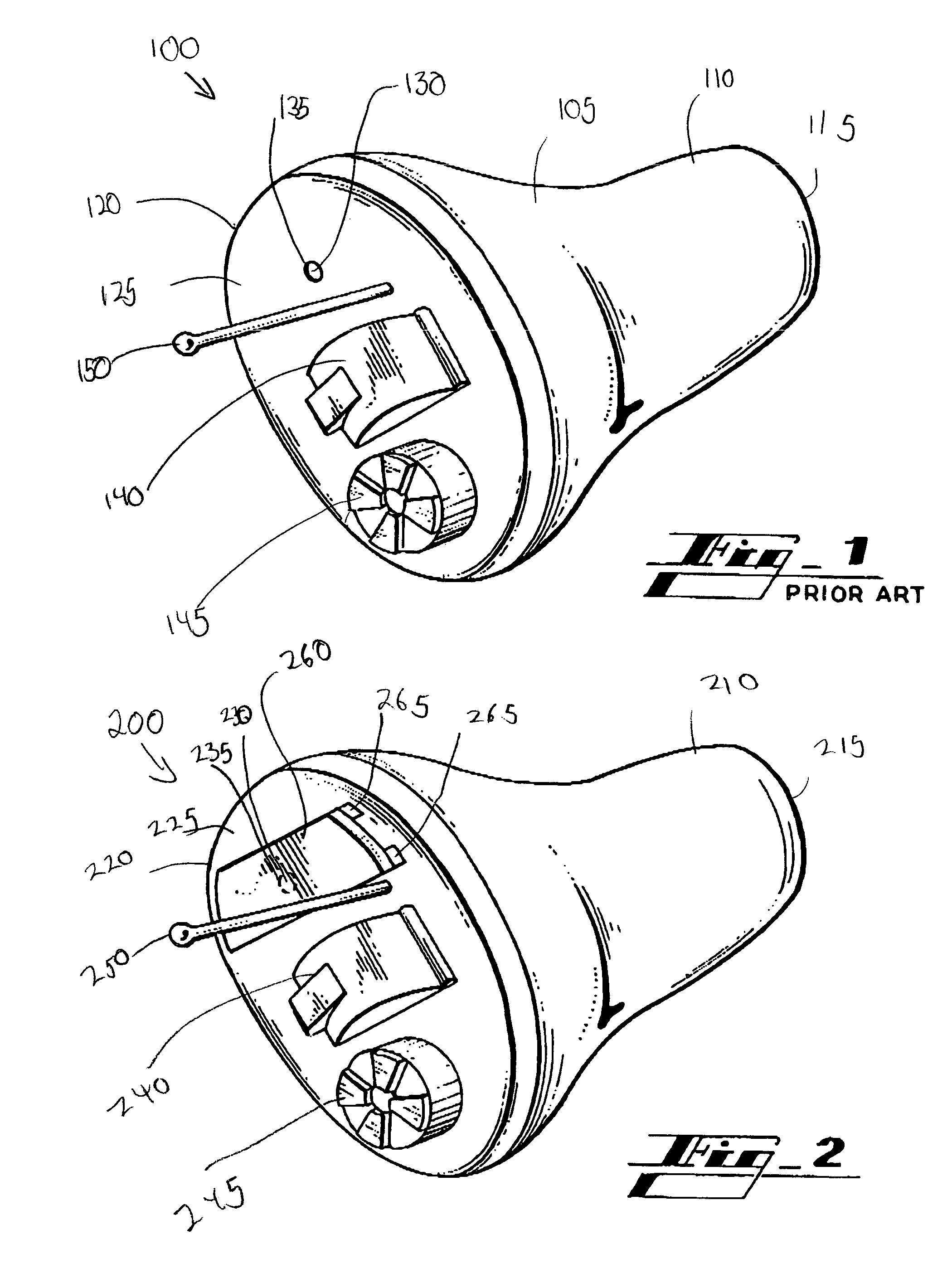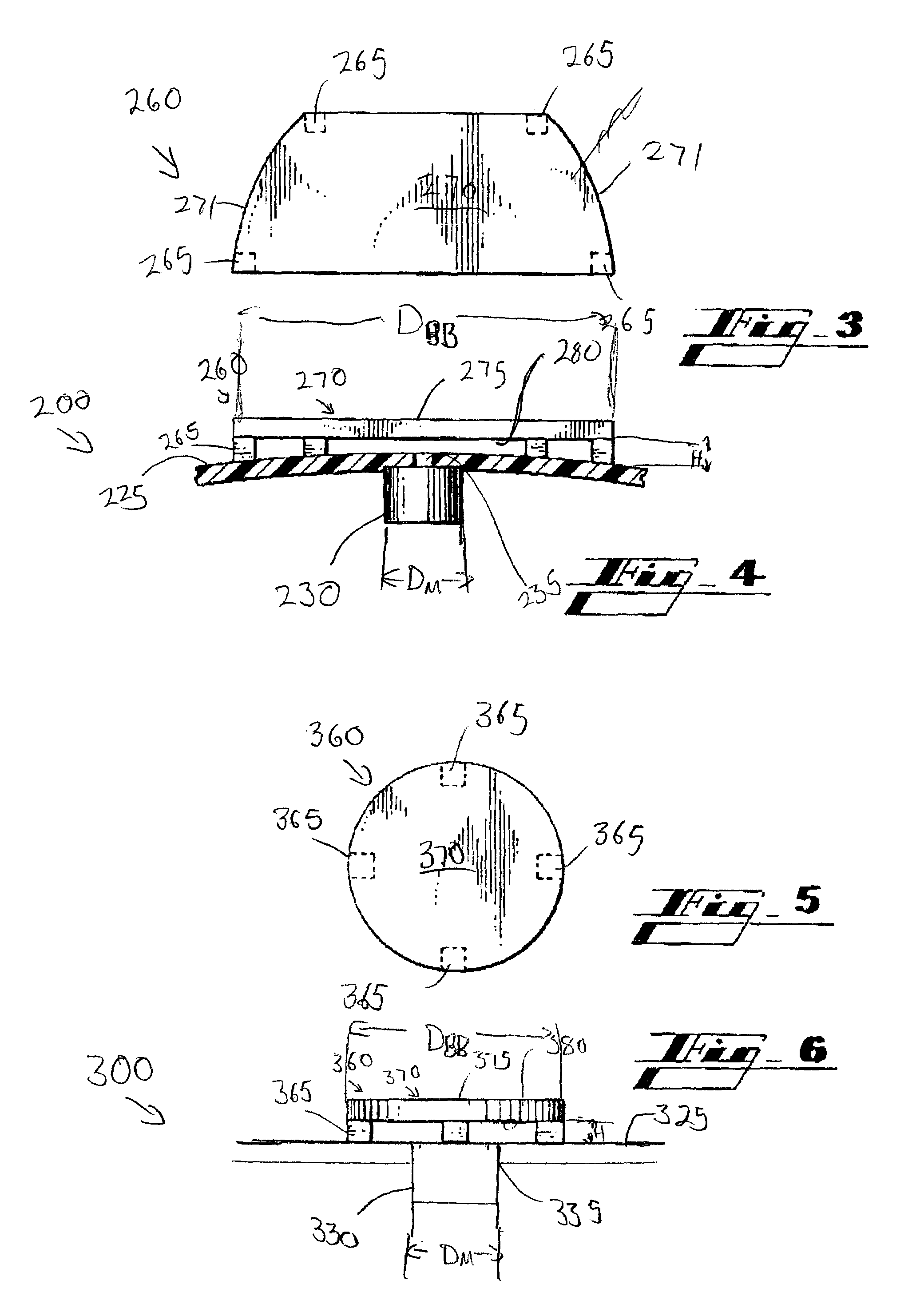Dual boundary pressure zone three dimensional microphone and hearing aid
a three-dimensional microphone and a pressure zone technology, applied in the field of acoustics, can solve the problems of phase problems, potential feedback in the system, pre-eminence and proximity effects, etc., and achieve the effects of reducing or eliminating proximity and pre-eminence effects, good high frequency response, and good high frequency respons
- Summary
- Abstract
- Description
- Claims
- Application Information
AI Technical Summary
Benefits of technology
Problems solved by technology
Method used
Image
Examples
Embodiment Construction
[0048]Referring to the drawings wherein like reference numerals designate corresponding parts throughout the several figures, reference is made first to FIG. 2 that illustrates an embodiment of a three dimensional hearing aid 200.
[0049]The hearing aid 200 shown exemplifies a hearing aid much like a prior art hearing aid to the extent of including a central body 205 having a general shape that is adapted to fit into a user's ear canal, a rear-most portion 210 having a speaker 215, a forward-most portion 220 including a face 225 having operational features of the hearing aid 200. These features include a microphone element 230, a battery door 240, a volume control 245 and a micro-handle 250. The microphone element 230 is typically placed underneath the surface of the face 225 (and can typically be flush the upper surface of the face 225) and an opening 235 the same diameter of the microphone element 230, which allows the sounds to enter to the microphone element 230. In general, the m...
PUM
 Login to View More
Login to View More Abstract
Description
Claims
Application Information
 Login to View More
Login to View More - R&D
- Intellectual Property
- Life Sciences
- Materials
- Tech Scout
- Unparalleled Data Quality
- Higher Quality Content
- 60% Fewer Hallucinations
Browse by: Latest US Patents, China's latest patents, Technical Efficacy Thesaurus, Application Domain, Technology Topic, Popular Technical Reports.
© 2025 PatSnap. All rights reserved.Legal|Privacy policy|Modern Slavery Act Transparency Statement|Sitemap|About US| Contact US: help@patsnap.com



